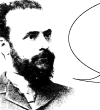It all began with Pareto and the 80/20 principle. The inventor Vilfredo Pareto was born in France in 1848, and no-one expected that he would discover a natural principle which can be applied to almost all fields of science.
The discovery was made during a study of how wealth was distributed among the Italian population. In his study he discovered that
80% of the land in Italy was owned by 20% of the population.
The principle applies to almost everything – also supply chain
He also noticed that 80% of his garden peas were being produced by 20% of the pea pods. Through several studies of different phenomena, he concluded that in many cases 80% of the consequences stemmed from 20% of the causes. He was the first to notice the variety of areas this principle applied to. Today, the 80/20 rule is used to describe when effort and reward is not a linear correlation.
The principle evolved into the classic ABC Analysis (see illustration at the very top)
- A is your most important products. The category contains very few, high-profitable products. They alone generate 80 % of your turnover
- B is less important products. This category accounts for approx. 15 % of your turnover.
- C is your “long tail” products. They play an insignificant role in terms of income, but account for more than half of your product numbers! All together they generate 5 % of your turnover.
and then onward to the double ABC Analysis used to explain why as little as 8 % of a company’s products matter.
More on the historical evolution of ABC
Vilfredo Pareto can’t be given the entire credit for the wide spread application of the 80/20 principle.
Joseph M. Juran is one of the gurus in Quality Management (QM). Juran was, along with W. Edwards Deming among the American professors who got invited by The Union of Japanese Scientist and Engineers, to introduce Japan’s production industry to the concepts behind Quality Control in 1954.
Juran’s work was focused on reducing waste and eliminating errors in production. He applied the Pareto principle to identify the 20% elements that caused 80% of all the errors. By doing so Juran became the first to apply Pareto’s 80/20 principle in a managerial context.
Based on his work, Juran developed the phrase “The vital few, and the trivial many”. A phrase that today is synonymous with the Pareto principle.
But how did the 80/20 principle transform into the ABC Analysis? In 1951, Dickie, H.F., wrote the article “ABC Inventory Analysis Shoots for Dollars Not Pennies”. The article was published in Factory Management and Maintenance, Vol. 109, No. 7, 1951, pp. 92-94. This article describes how General Electric, as the first company ever, applied what they called an ABC Analysis, to optimize their inventory.
The rest is history!
 It all began with Pareto and the 80/20 principle. The inventor
It all began with Pareto and the 80/20 principle. The inventor 